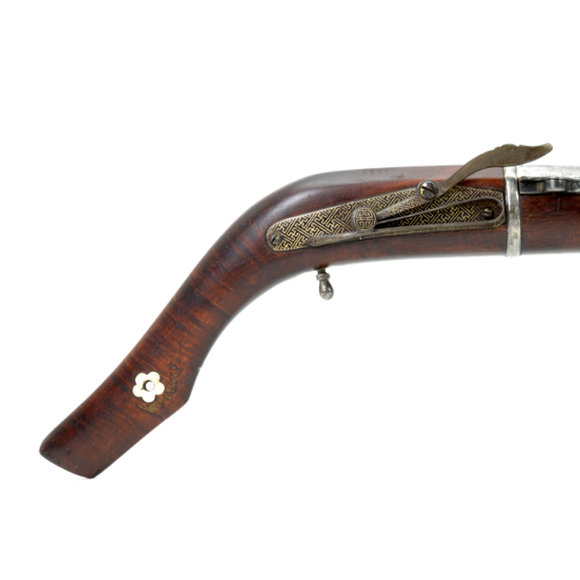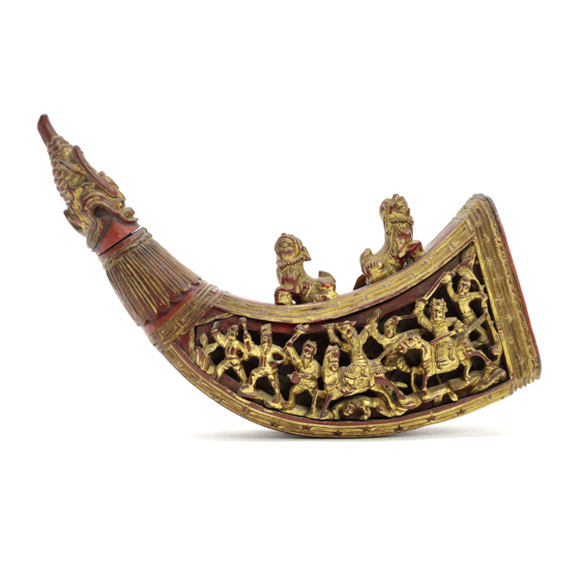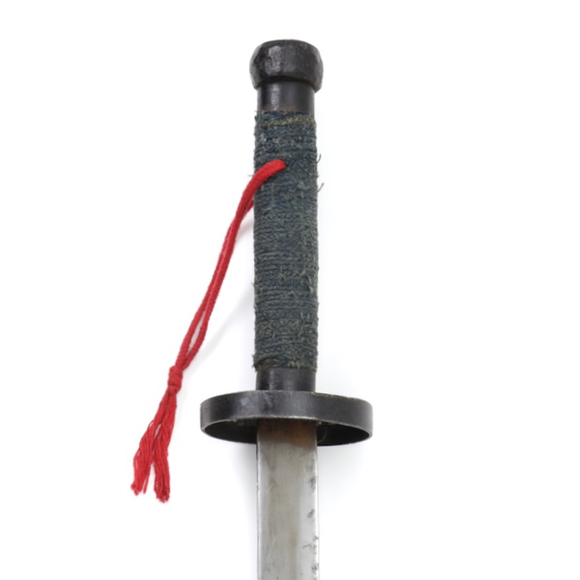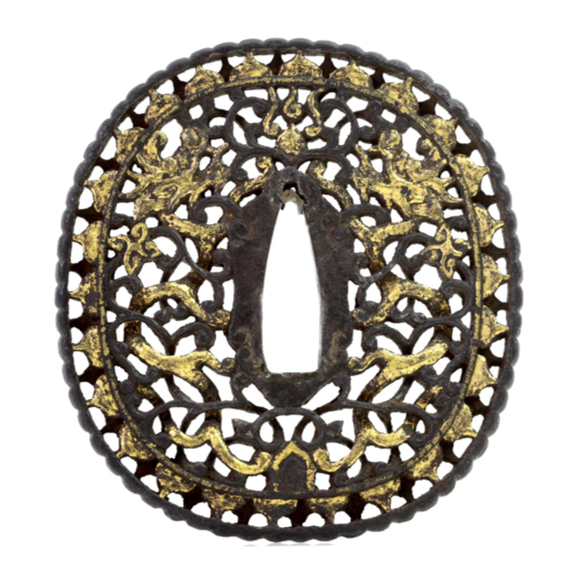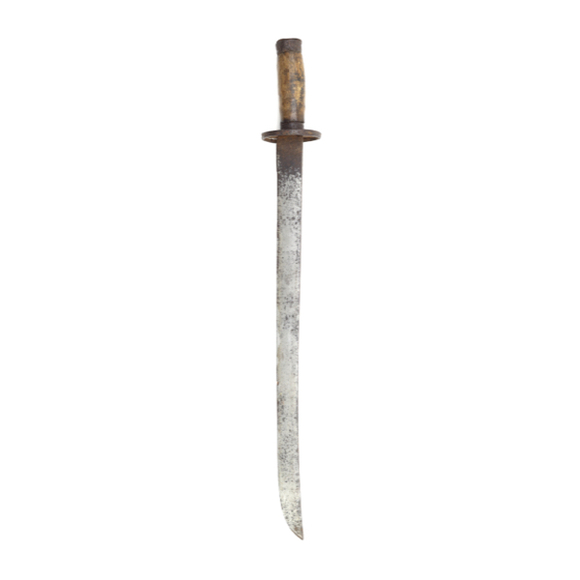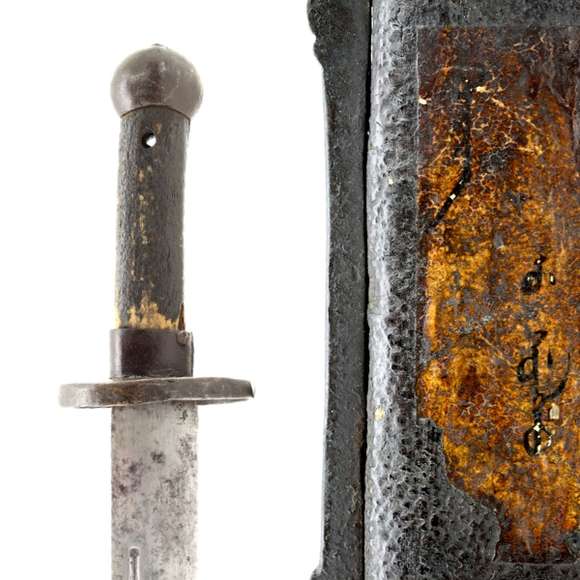Language: Mandarin Chinese
Source: Classical literature
Description
Dāoqiào (刀鞘) means "saber scabbard".1 The Qing saber usually consists of two wooden halves joined together, usually covered with leather or ray-skin. Lacquered scabbards are also encountered.
The Qing saber scabbard is almost always fitted with:
-a mouthpiece called dāoqiào kǒugū (鞘口箍)
-two suspension bands called dāoqiào zhōngshù (刀鞘中束), connected to:
-a suspension bar called dāo shùliáng (刀束樑) or qiàoshàng shuāngyǎn shù (鞘上雙眼束)
-the closed end is capped with a chape called dāoqiào bìshù (刀鞘庇束).2
Exceptions to this rule are very rare but are for example seen on some 19th-century southern bannerman sabers which tend to come in simpler all leather scabbards.
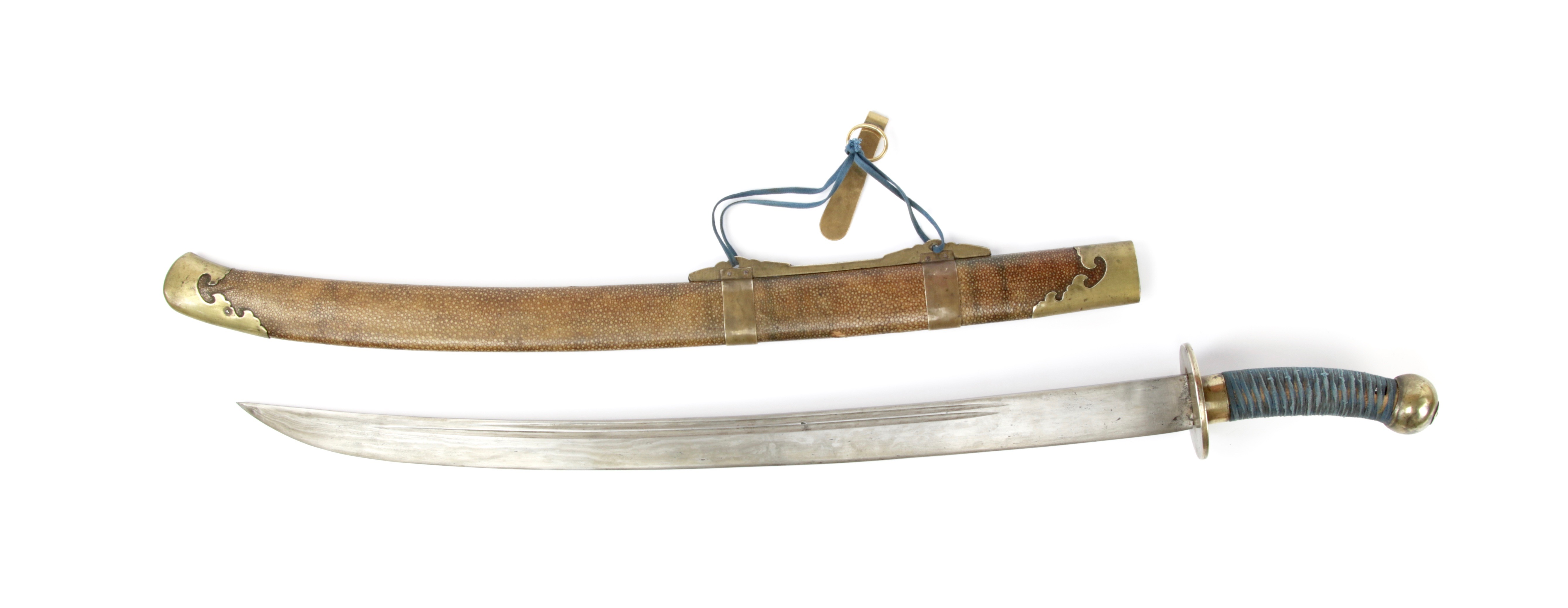
A standard Qing military pattern saber of the mid 19th century, with its round style scabbard.

A standard Qing military pattern officer's saber of the mid 19th century, with its round style scabbard.

An 18th century military saber with its angular style scabbard.
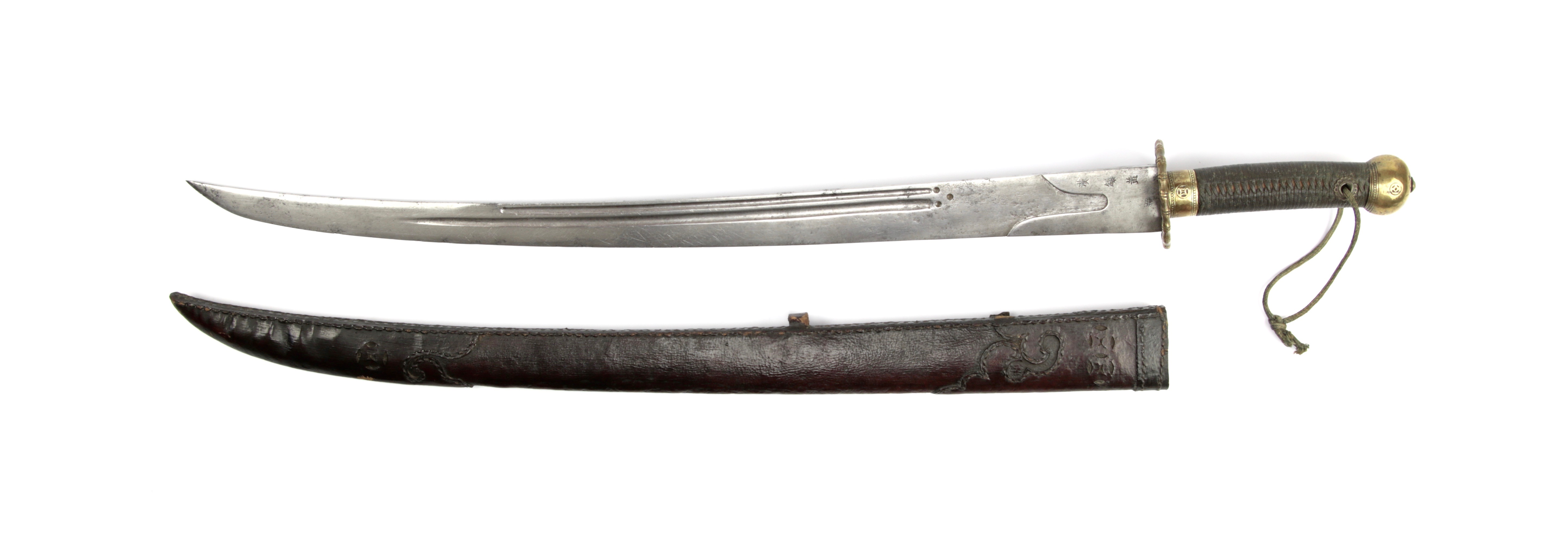
The rule breaker: A 19th century southern bannerman's saber with all-leather scabbard.
Also see
For a complete overview of saber terminology, see: A Chinese saber glossary.
In Manchu, the word is homhom.
References
1. Tongwen Guanghui Quanshu (同文廣彙全書) or "Enlarged and complete dictionary" of 1704. A Qing imperial dictionary in Chinese and Manchu, each entry double-checked and approved by the Kangxi emperor.
2. Ibid. and Wuti Qingwen Jian (五體清文鑑) or "Five languages compendium". A Qing imperial dictionary in Manchu, Mongolian, Uighur, Tibetan and Chinese of 1766. Published under the Qianlong emperor.

